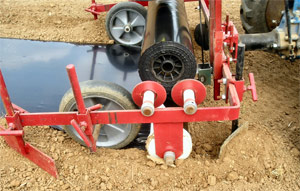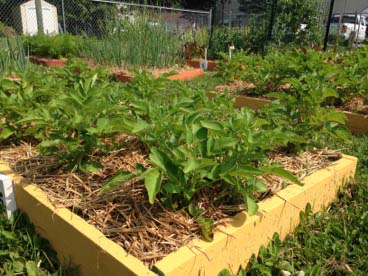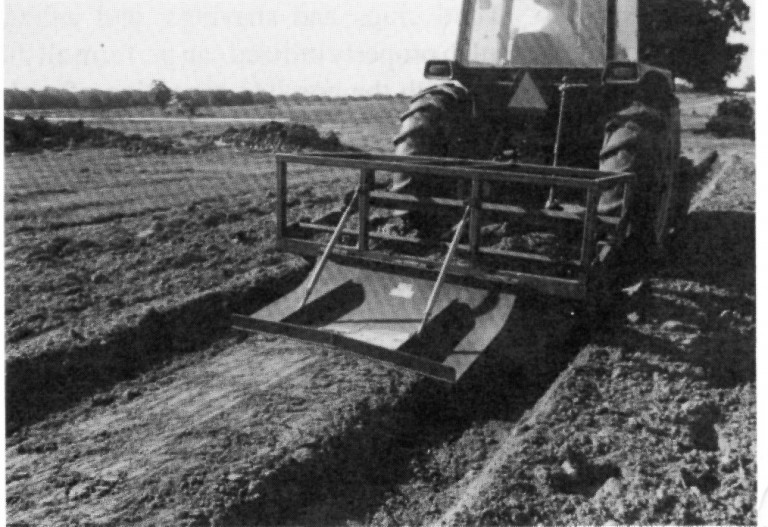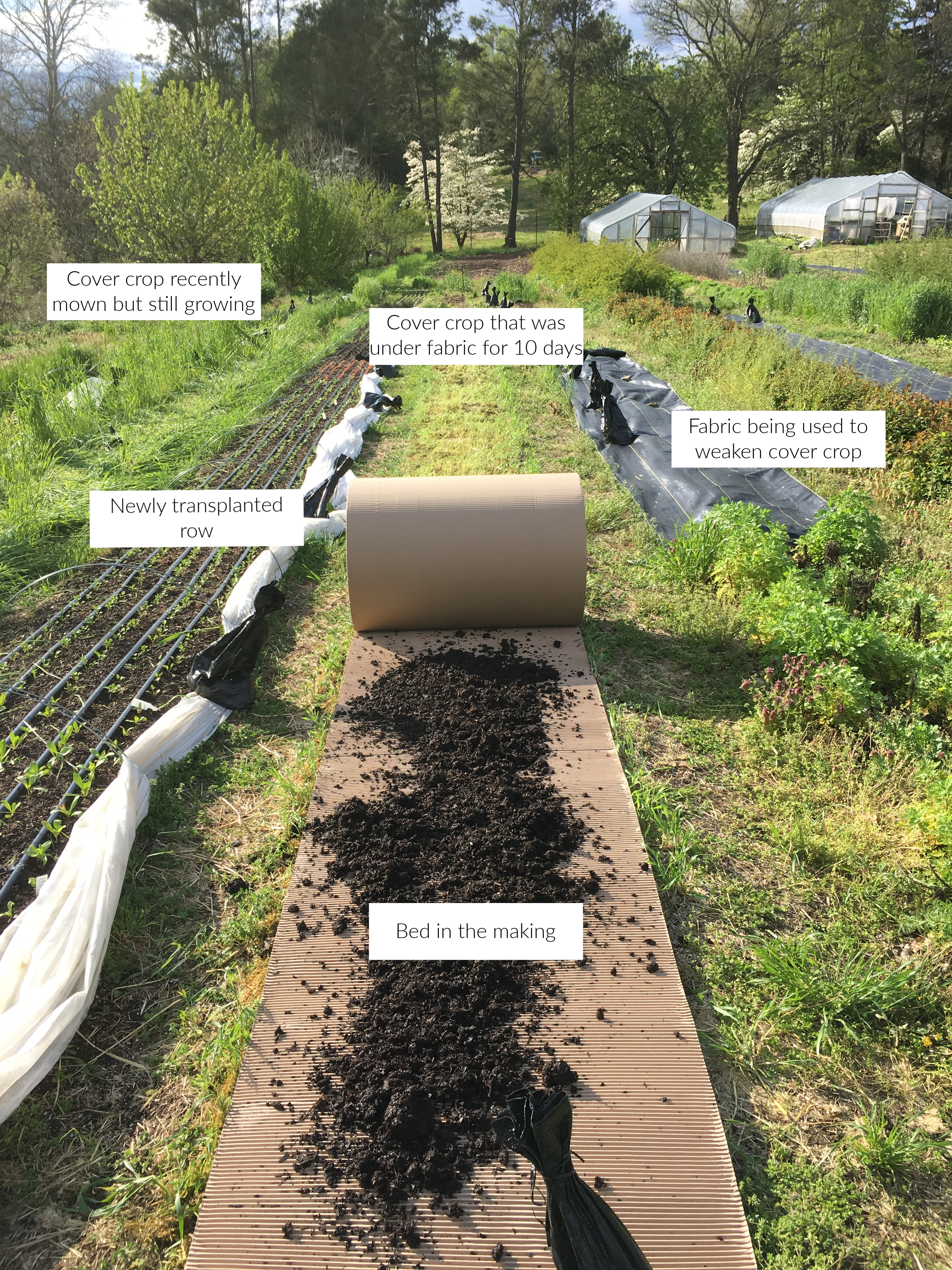How To Use A Raised Bed Plastic Mulch Layer For Bigger Healthier
Title: How to Use a Raised Bed Plastic Mulch Layer for Bigger, Healthier Vegetables
Introduction:
Raised bed gardening is a great way to grow your own vegetables, fruits, and herbs. It's a more efficient use of space, and it can help to improve the drainage and aeration of your soil. One way to make raised bed gardening even more successful is to use a plastic mulch layer.
Plastic mulch is a sheet of plastic that is placed over the soil in a raised bed. It has a number of benefits, including:
- Suppressing weeds. Plastic mulch can help to suppress weeds by blocking out sunlight and making it difficult for them to germinate. This can save you a lot of time and effort weeding your garden.
- Retaining moisture. Plastic mulch can help to retain moisture in the soil, which is especially important in hot, dry climates. This can help your plants to grow healthier and produce more food.
- Warming the soil. Plastic mulch can help to warm the soil in the spring, which can give your plants a head start. This is especially beneficial for cold-sensitive crops like tomatoes and peppers.
Main Content:
Here are the steps on how to use a raised bed plastic mulch layer:
- Prepare your raised bed. Make sure that your raised bed is level and free of weeds. If you are using a new raised bed, you may need to add some compost or other organic matter to the soil to improve drainage and fertility.
- Measure the size of your raised bed. Cut the plastic mulch to fit the size of your raised bed.
- Lay the plastic mulch in the raised bed. Make sure that the plastic mulch overlaps by at least 6 inches on all sides.
- Secure the plastic mulch in place. You can use landscape staples, rocks, or bricks to secure the plastic mulch in place.
- Plant your vegetables. Once the plastic mulch is in place, you can plant your vegetables. Be sure to water your plants regularly, especially during hot, dry weather.
Conclusion:
Using a raised bed plastic mulch layer can help you to grow bigger, healthier vegetables. It's a simple and effective way to improve the productivity of your raised bed garden.
If you are looking for a way to make gardening easier and more productive, a raised bed plastic mulch layer is a great option. This tool can help you to:
- Save time and water by reducing the need for weeding and watering.
- Improve soil quality by suppressing weeds and pests.
- Increase yields by providing a warmer and more consistent growing environment.
- Extend your growing season by protecting your plants from the cold and heat.
To learn more about raised bed plastic mulch layers, visit Home Gardening.
FAQ of raised bed plastic mulch layer
- What is a raised bed plastic mulch layer?
A raised bed plastic mulch layer is a piece of equipment that is used to lay plastic mulch over raised beds. This helps to suppress weeds, retain moisture, and warm the soil, which can lead to improved plant growth.
- What are the benefits of using a raised bed plastic mulch layer?
There are many benefits to using a raised bed plastic mulch layer. Some of the most common benefits include:
* Suppression of weeds: Plastic mulch can help to suppress weeds by blocking out sunlight and providing a physical barrier. This can save you time and money on weeding, and can also improve the health of your plants by reducing competition from weeds.
* Retention of moisture: Plastic mulch can help to retain moisture in the soil by reducing evaporation. This can be especially beneficial in hot, dry climates.
* Warming of the soil: Plastic mulch can help to warm the soil in spring and fall, which can lead to earlier planting and later harvests.
* Improved plant growth: The combination of weed suppression, moisture retention, and soil warming can all lead to improved plant growth. This can result in larger yields, healthier plants, and reduced pest and disease problems.
- What are the drawbacks of using a raised bed plastic mulch layer?
There are a few potential drawbacks to using a raised bed plastic mulch layer. Some of the most common drawbacks include:
* Cost: Raised bed plastic mulch layers can be expensive, especially if you need to purchase a large one.
* Setup: Raised bed plastic mulch layers can be difficult to set up, especially if you have a large garden.
* Maintenance: Raised bed plastic mulch layers need to be maintained regularly. This includes removing weeds that grow through the plastic, repairing any tears or holes, and replacing the plastic every few years.
- How do I choose the right raised bed plastic mulch layer for my needs?
When choosing a raised bed plastic mulch layer, there are a few factors you need to consider, including:
* The size of your garden: If you have a small garden, you can get away with a smaller raised bed plastic mulch layer. However, if you have a large garden, you will need a larger one.
* The type of plastic mulch: There are two main types of plastic mulch: clear and black. Clear plastic mulch allows more sunlight to reach the soil, which can help to warm the soil and promote plant growth. Black plastic mulch absorbs more heat, which can help to suppress weeds and pests.
* The features of the raised bed plastic mulch layer: Some raised bed plastic mulch layers come with additional features, such as drip irrigation attachments or weed barrier fabric. These features can make it easier to care for your garden, but they can also increase the cost of the raised bed plastic mulch layer.
- How do I use a raised bed plastic mulch layer?
To use a raised bed plastic mulch layer, you will need to:
1. Prepare your raised beds by removing any weeds and debris.
2. Lay the plastic mulch over the raised beds, overlapping the edges by at least 6 inches.
3. Secure the plastic mulch in place with soil staples or rocks.
4. Plant your seeds or seedlings in the holes that have been cut in the plastic mulch.
5. Water your plants regularly.
6. Remove any weeds that grow through the plastic mulch.
7. Replace the plastic mulch every few years.
Image of raised bed plastic mulch layer
- Black plastic mulch layer in a raised bed garden. The mulch is laid out flat and smooth, with the edges overlapping slightly. There are plants growing in the bed, and the mulch is dark and reflective.

- A person installing a clear plastic mulch layer in a raised bed. The person is using a staple gun to attach the mulch to the sides of the bed. The mulch is clear, so the soil underneath is visible.

- A raised bed with a black plastic mulch layer and a layer of straw on top. The black mulch is visible underneath the straw, which helps to suppress weeds and retain moisture. There are plants growing in the bed, and the straw is a light brown color.

- A raised bed with a clear plastic mulch layer and a layer of wood chips on top. The clear mulch is visible underneath the wood chips, which helps to suppress weeds and retain moisture. There are plants growing in the bed, and the wood chips are a light brown color.

- A raised bed with a black plastic mulch layer and a layer of black plastic sheeting on top. The black mulch is visible underneath the black sheeting, which helps to suppress weeds and retain moisture. There are plants growing in the bed, and the sheeting is a solid black color.

- A raised bed with a clear plastic mulch layer and a layer of landscape fabric on top. The clear mulch is visible underneath the landscape fabric, which helps to suppress weeds and retain moisture. There are plants growing in the bed, and the landscape fabric is a dark green color.
- A raised bed with a black plastic mulch layer and a layer of cardboard on top. The black mulch is visible underneath the cardboard, which helps to suppress weeds and retain moisture. There are plants growing in the bed, and the cardboard is a brown color.

- A raised bed with a clear plastic mulch layer and a layer of newspaper on top. The clear mulch is visible underneath the newspaper, which helps to suppress weeds and retain moisture. There are plants growing in the bed, and the newspaper is a black and white color.

- A raised bed with a black plastic mulch layer and a layer of compost on top. The black mulch is visible underneath the compost, which helps to suppress weeds and retain moisture. There are plants growing in the bed, and the compost is a dark brown color.

- A raised bed with a clear plastic mulch layer and a layer of topsoil on top. The clear mulch is visible underneath the topsoil, which helps to suppress weeds and retain moisture. There are plants growing in the bed, and the topsoil is a light brown color.

Post a Comment for "How To Use A Raised Bed Plastic Mulch Layer For Bigger Healthier"